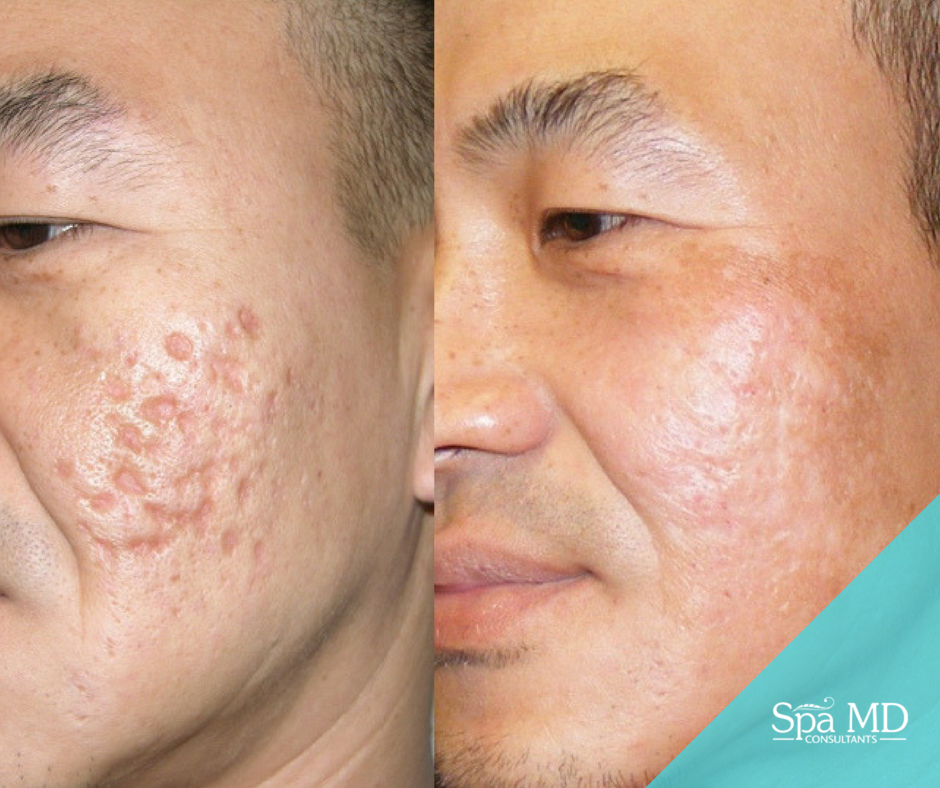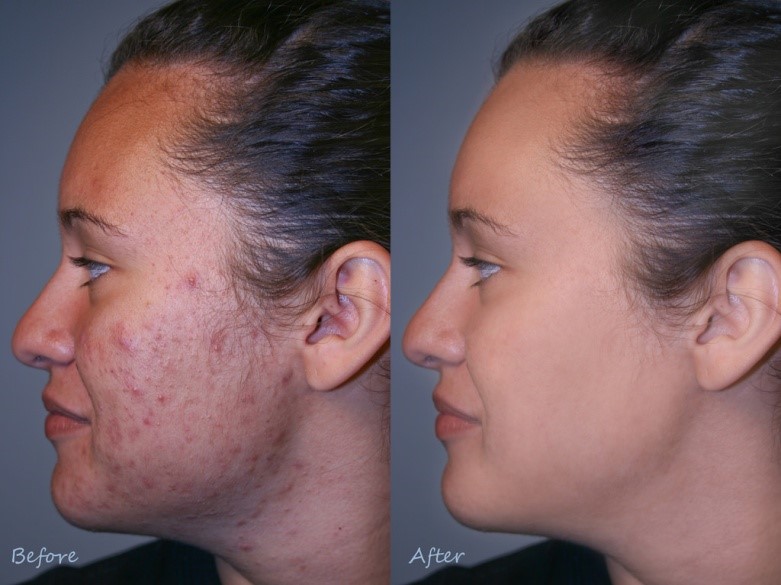The Buzz on Acne Scars
The Buzz on Acne Scars
Blog Article
What Does Acne Scars Do?
Table of ContentsThe Ultimate Guide To Acne ScarsFascination About Acne ScarsThe Single Strategy To Use For Acne ScarsWhat Does Acne Scars Mean?The Only Guide for Acne Scars
Increased acne marks happen when the body creates as well much collagen and develop a noticeable bump. As we age, acne scars come to be more noticeably due to the fact that our skin sheds collagen.A person delays treatment for inflammatory acne. The longer you wait to look for therapy for acne, the higher the threat of scarring. An individual chooses at, squeezes or stands out acne. When popping an acne, you press microorganisms deeper into pore. If we didn't require another reason that not to pop an acne, know that a mark might be the straight outcome of your actions.
Your genetic makeup plays a huge function in just how much acne, and what kind of acne you might create. As we said earlier, there is no magic active ingredient to take acne scars away in the blink of an eye. There are treatments available that help decrease the scarring over time.
, a skin specialist may lift the mark, bringing it closer to the surface area of the skin to make it much less obvious. Resurfacing removes layers of the skin, which enables the body to create brand-new skin cells.
6 Easy Facts About Acne Scars Explained
Lasers and various other light therapies can deal with elevated marks securely and effectively. (PDL) can assist reduce the impulse and pain, reduce shade, and squash an increased scar.
After 3 needling therapies, there was renovation in the appearance of acne marks over time contrasted with the control team, with marginal pain reported - acne scars. Therapy of acne scarring continues to be a healing obstacle, with treatment approaches that include an array of feasible alternatives.
Nonablative and ablative lasers can be utilized to either get rid of or pierce skin in a fine pinpoint pattern, with resulting neocollagenesis; just a fraction of the skin is treated with each treatment, and a series of therapies are needed to treat the entire affected surface. It has been suggested that neocollagenesis and enhancement of acne scars can additionally be achieved using needle rollers, which use a mechanical, macroscopic strategy to induce tiny skin and dermal openings.
Getting The Acne Scars To Work
Like paint rollers, such tools can be moved back and forth along the skin. Needling as a possible therapy for acne scarring was presented by Camirand and Doucet, that described use of a tattoo weapon to abrade acne scars. Fernandes,6 ultimately insisted that needling with a roller brought about percutaneous collagen induction.
At each of these visits, needling was carried out on the research study therapy area, and topical anesthetic was only massaged right into the control location. Digital pictures and negative events (eg, infection, extended erythema, extended edema, serosanguineous drainage, blood loss, ulceration, disintegration, and pigmentation), including their duration, resolution, strength, relationship to the research study treatment, and any type of medicinal activities taken, were tape-recorded prior to each therapy.

Pain level was videotaped based upon a 10-point visual analog scale after the treatment. Right away after each treatment, gentle hands-on pressure with gauze was requested 5 mins to control pinpoint bleeding and serum secretion. The skin was soaked with saline swabs for an hour to promote hydration while the people were enlightened concerning the need for home treatment.
Some Known Facts About Acne Scars.
The tool was then further cleaned up by gas sterilization, stored in a closed plan, and classified with the participant's name and the initial therapy date on the box until the following treatment. This sanitation procedure was followed to guarantee a high level of infection control in this study setup. The key end result procedure was the quantitative global scarring grading system, established by Goodman and Baron.
Two blinded skin specialists (S.H. and M.P.) individually ranked participants' acne scars based on basic digital pictures obtained at baseline and at the 3-month and 6-month follow-up gos to. Required arrangement was used to resolve scores. Considered that this was an early pilot test, we considered it appropriate to consider acne navigate to these guys marks collectively, not independently, by various morphologic subtypes (eg, rolling, boxcar, ice choice, and so forth).
and M.P.) did not join randomization or treatment and therefore were able to be blinded regarding assignment. Adjustments in mean mark ratings from baseline to 3 and 6 months, specifically, were computed for the therapy and control arms. Repeated-measures analysis of variation with pairwise comparisons with Sidak adjustment were done to test whether the scar score differed on therapy kind, time, or the interaction in between both.
The Wilcoxon signed that site rank test was made use of to analyze whether the difference in overall acne scar look was related to treatment type. The research study took place from November 30, 2009, via July 27, 2010. Twenty individuals consented, and 5 quit before the initial treatment. The remaining 15 completed all therapies and are evaluated.
Acne Scars Things To Know Before You Get This
At 3 months compared with baseline, the decrease in scar score in the needling team was nonsignificant (mean distinction, 2.4, 95% CI, 0.01 to 4.8; P =.052) (Figure 3). The needling procedure was not specifically uncomfortable. The mean discomfort score was 1.08 of 10. Discomfort rankings boosted somewhat gradually (P =.01), with week 4 discomfort ratings (mean, 1.75; 95% CI, 0.90-2.60) considerably more than week 2 (mean, 0.78; 95% CI, 0.40-1.20) and week 0 (mean, 0.71; 95% CI, 0.40-1.00).
When asked to estimate the pain experienced throughout and in the days after their procedure, individuals generally reported no discomfort (acne scars). A lot of participants were extremely completely satisfied with their treatment, responded yes when asked if they would certainly do this procedure once again to deal with added scars, and stated they would certainly advise needling to their pals
Light transient erythema and edema, which were not identified as damaging events and for this go to these guys reason not officially tracked, were routinely observed by the investigator (M.A.) and reported by individuals after treatments. This research study exposes some enhancement in acne marks after a series of 3 therapies of needling. There is a statistically significant enhancement in such marks in the treatment group from standard to 6 months and no substantial enhancement during this period in the control team.

Report this page